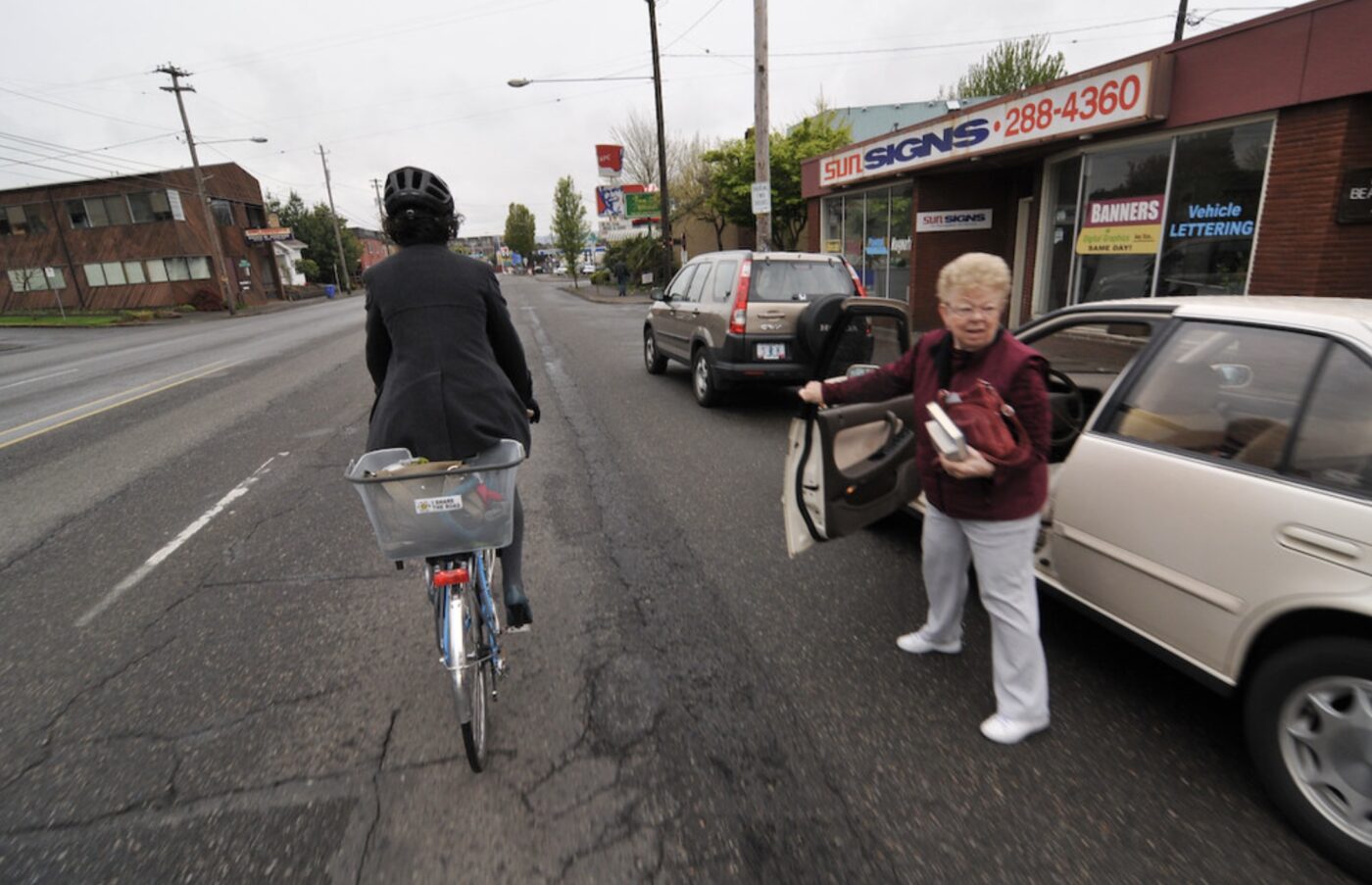A key section of Sandy Boulevard has big potential to improve Portland’s transportation system — especially if it can be redesigned to meet a latent demand for cycling.
That’s one of the takeaways from a report made public last month by a group of Portland State University graduate students. The Future Sandy Existing Conditions report was prepared by Strategic Minds Consulting Group as part of a project for PSU’s Master of Urban and Regional Planning (MURP) program. Students Afroza Hossain Misty, Anchal Cheruvari, Heather Rector, Holly Querin, Katelyn Dendas, and Symeon Walker are working with local nonprofit BikeLoud PDX to investigate the potential of adding a major bikeway to Sandy when it gets repaved by the Portland Bureau of Transportation in 2026. (You might recall that several of these students came to Bike Happy Hour on April 10th to garner feedback.)
In a bid to fortify their advocacy push for a bikeway on Sandy Blvd, BikeLoud PDX submitted an application to PSU back in November and the project was chosen for the “MURP workshop”. According to PSU, that program, “is intended to give our students hands-on experience in conceiving, planning, and implementing a community-based planning project in close consultation with a committed client/partner.”
This existing conditions report is the first product of the student’s partnership with BikeLoud.
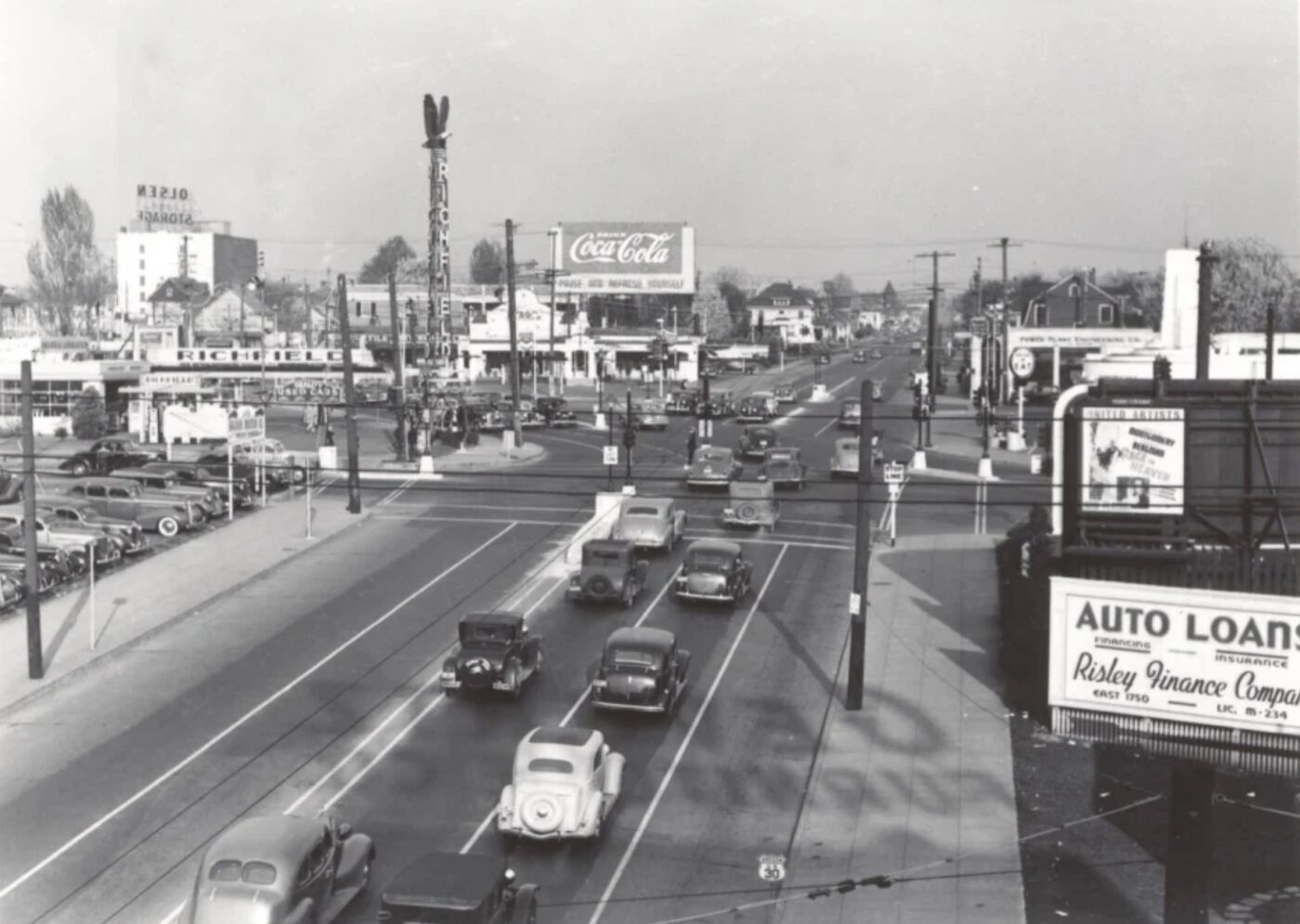
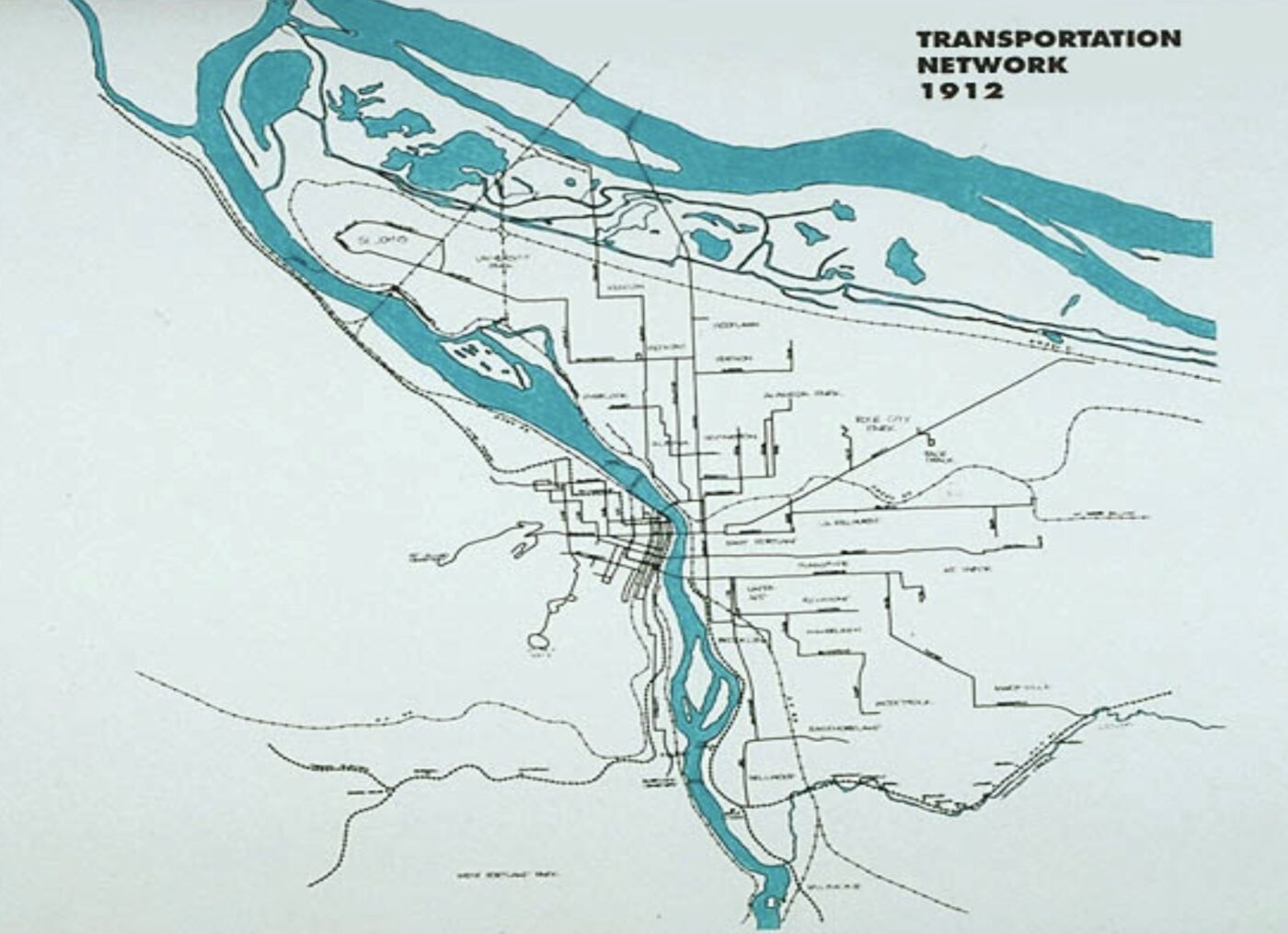
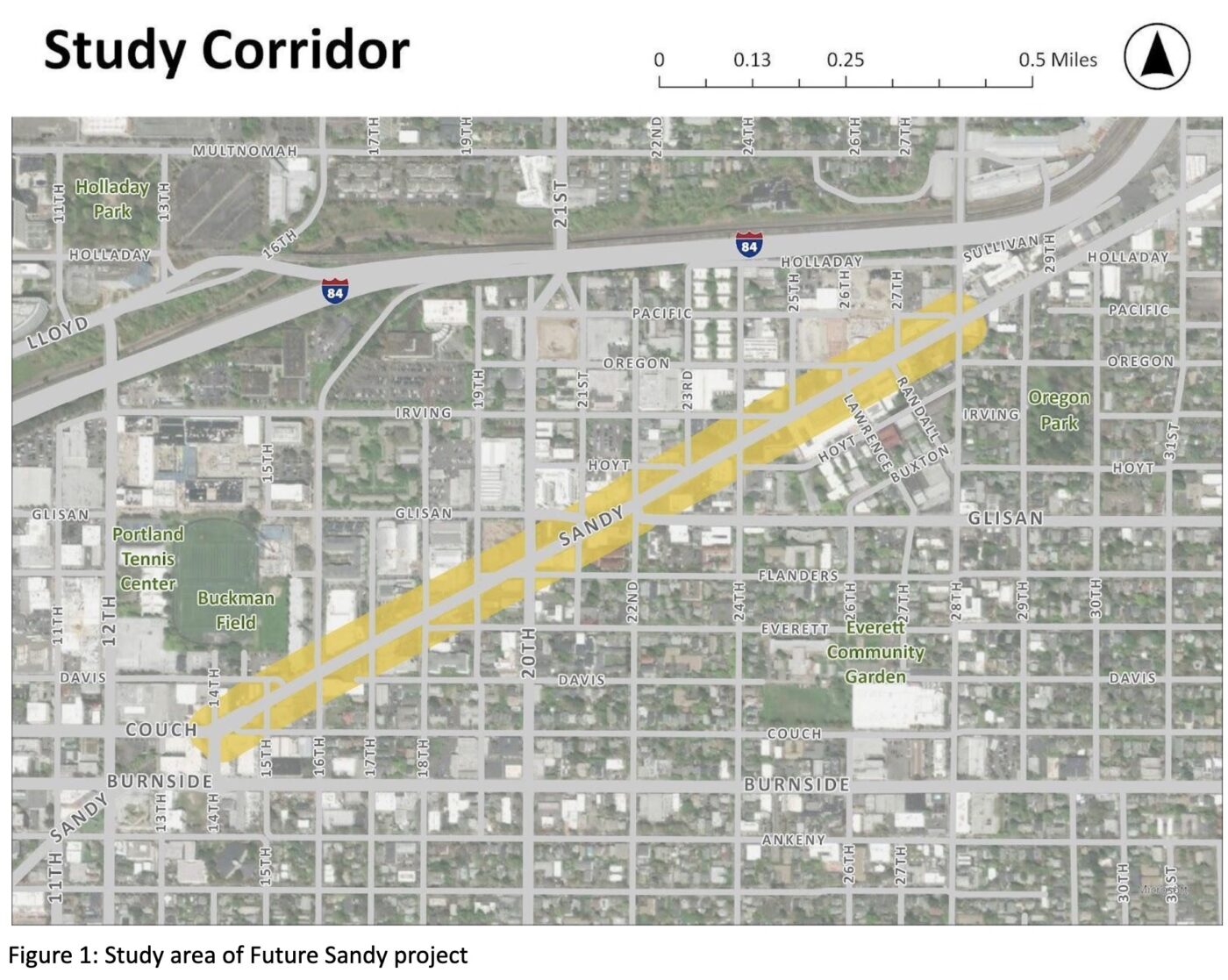
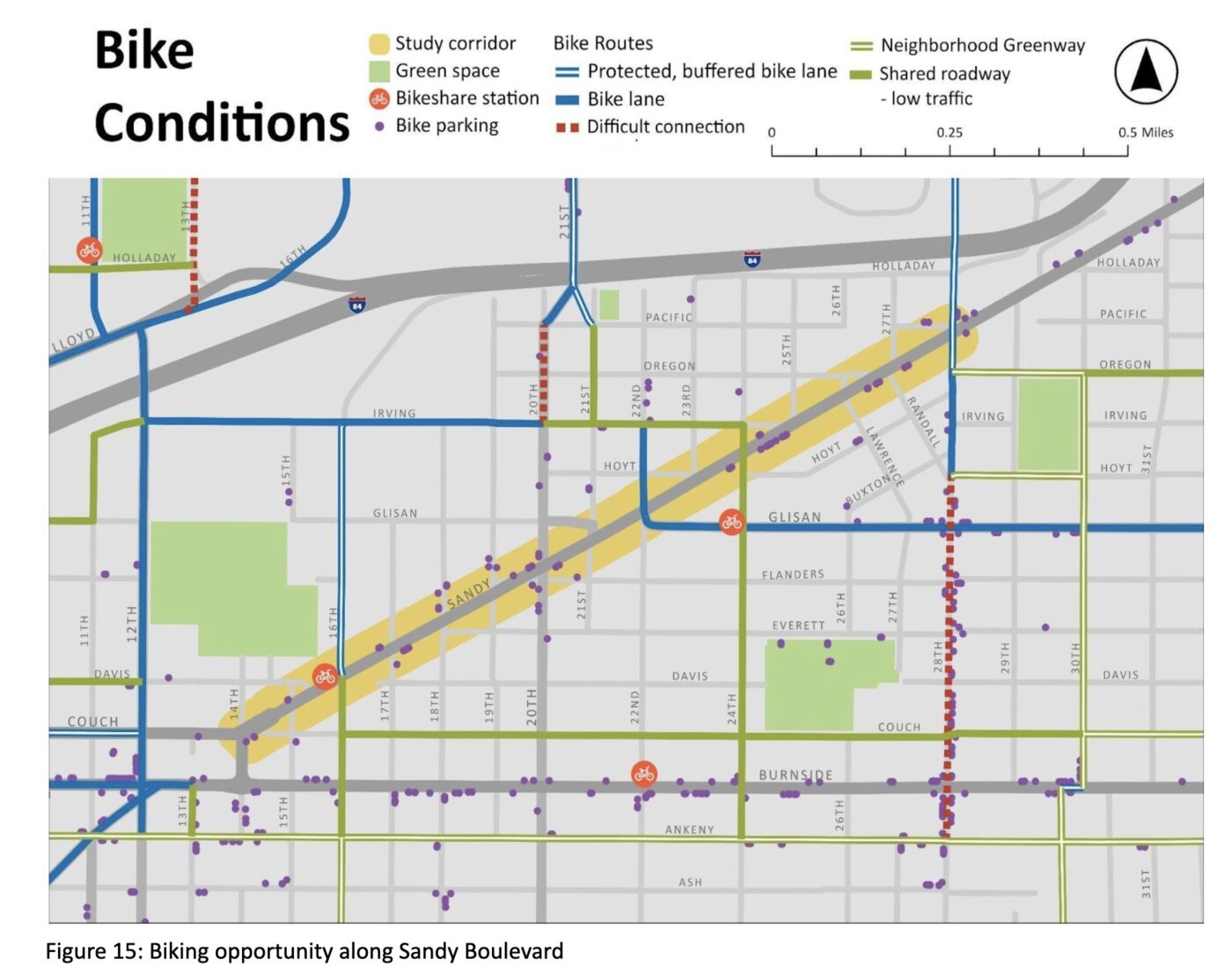
BikeLoud feels the upcoming PBOT repaving project is “an important opportunity to reconfigure the street.” As we’ve reported, Sandy’s flat, direct, diagonal alignment makes it a very seductive short-cut to many important destinations, but it lacks dedicated bicycle infrastructure and most riders don’t feel like the safety risk is worth the time savings.
Strategic Minds Consulting Group hasn’t completed their full report that will offer recommendations on more detailed insights, but the existing conditions report validates BikeLoud’s vision. “The study area’s population density combined with the mixture of commercial development and (mostly renter-occupied) housing along the corridor make it well-suited for investments in transit, walking, and biking,” reads the report.
Here are more of their key takeaways:
- Sandy Boulevard has taken many forms through the years and is again poised to change as the number of multifamily and mixed-use developments increase along the corridor.
- The median household income of the study area is noticeably lower than the median income of the city as a whole, reflecting a need for low-cost transportation options to serve the community.
- Sandy Boulevard is estimated to have a high latent demand for cycling due to its diagonal nature but currently lacks cycling infrastructure, which is misaligned with the corridor’s designation as a Major City Bikeway.
- The city and region’s current plans and policies support the transformation of the corridor into one that prioritizes active transportation and transit usage in order to meet goals related to climate change mitigation, safety improvements, environmental health, and quality of life.
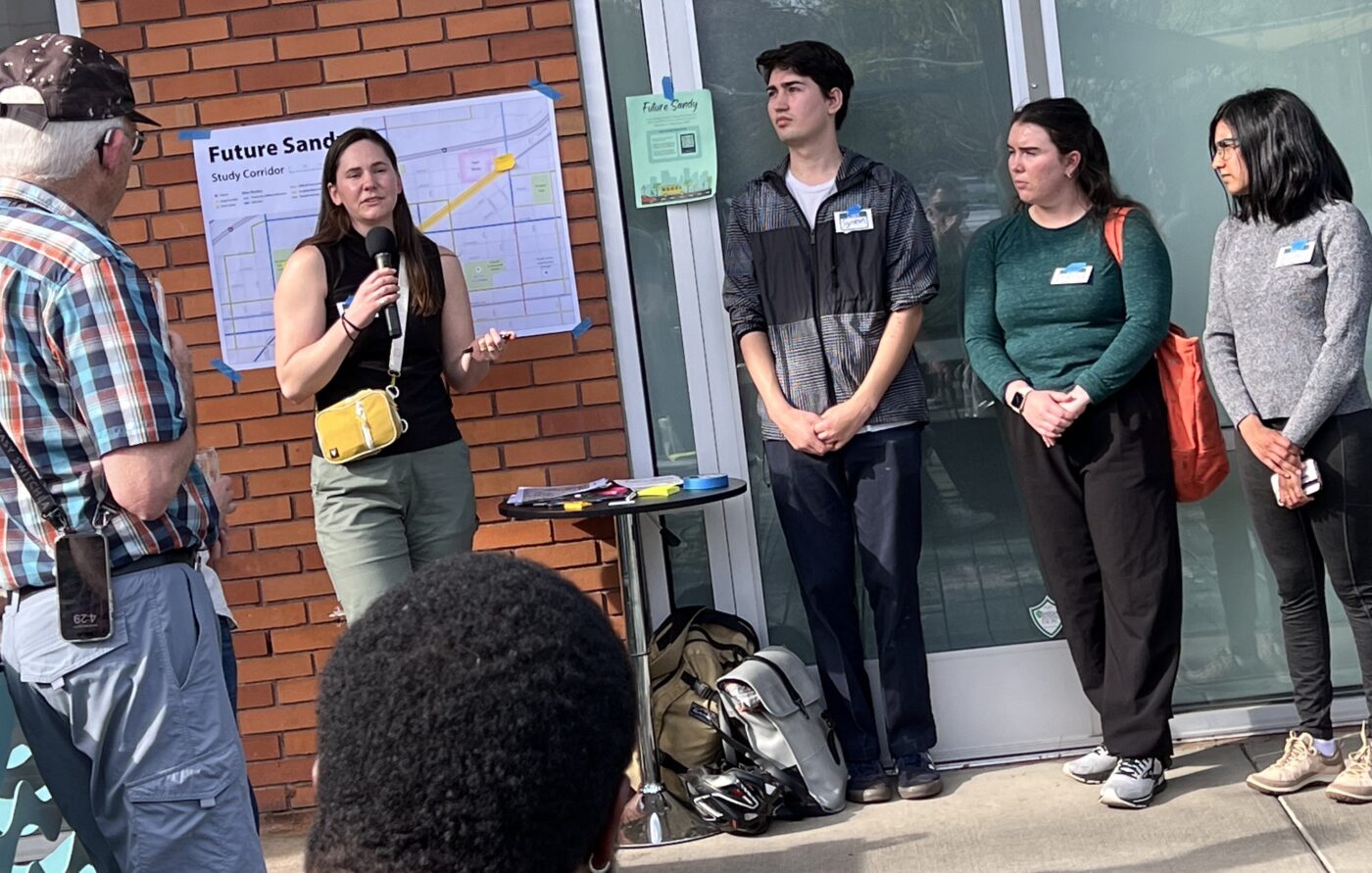
The students’ fresh eyes on Sandy also validate a lot of what many veteran Portland bicycle riders have known for many years:
“Unless they choose to bike within the travel lanes on Sandy, cyclists currently must zig-zag along the bike network to move southwest to northeast… Even when following the bike routes, gaps in the bike network create a confusing and stressful experience when biking.”
Not only is Sandy “confusing and stressful” for cyclists, it’s current design caters only to car users. And when bicycle users try to avoid it they incur an unfair time and distance penalty.
Strategic Minds believes increasing housing and commercial density along the corridor are another factor that should point toward a bike-centric future for Sandy.
“The city and region’s Vision Zero goals, modal hierarchy, and climate goals support the need to move the corridor away from dominant automobile use and toward active transportation and transit,” the report concludes.
Meet the students and learn more about their Future Sandy project at an hopen house tonight (Monday, May 13th) from 5:30 to 7:00 pm at The Village Free School (1785 NE Sandy Blvd).

